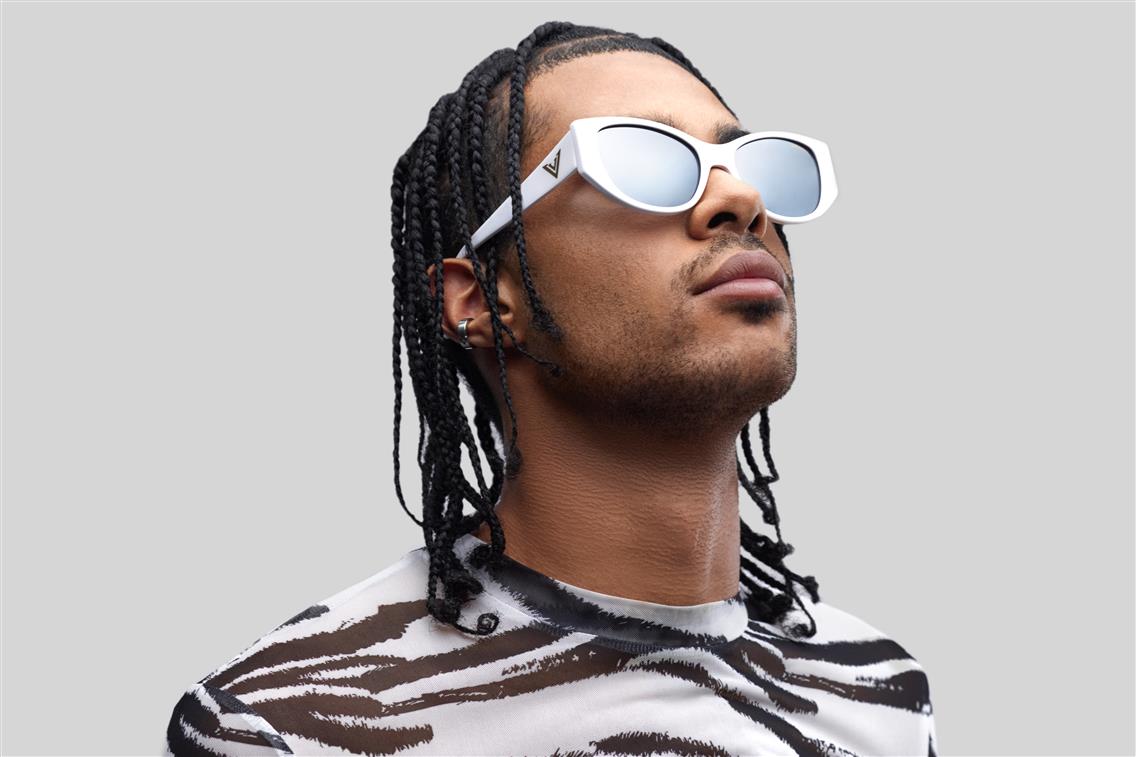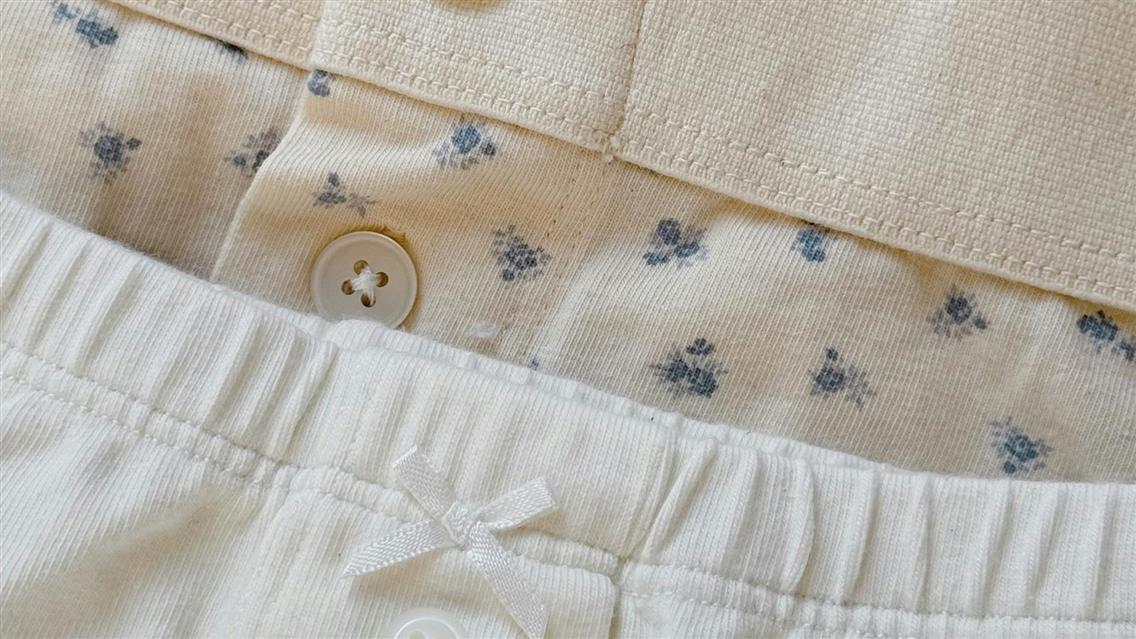Fashion Photography for eCommerce Brands

What is eCommerce Fashion Photography, and How Does It Distinguish from Other Types
E-commerce fashion photography is a unique type of visual content that goes beyond aesthetics. eCommerce fashion photography is laser-focused on clarity, functionality, and driving conversions.
This means images are designed to showcase the product’s true colors, textures, and details, allowing customers to see exactly what they are buying. E-commerce photography aims to show the functionality of an item from multiple angles and demonstrates how the clothing fits and moves, helping shoppers make confident, informed decisions. It merges art and commerce, creating visuals that not only appeal to a consumer’s sense of style but also meet practical needs such as showcasing product details, fit, and quality.
It aims to inspire and evoke emotion, not necessarily to drive immediate sales. Fashion shots are often conceptual, accentuating or highlighting the brand’s image or capturing a cultural moment. Picture this: You're scrolling through Instagram and instantly recognize a brand without seeing its logo. That's the power of distinctive fashion photography. It's about creating a visual signature that stays with customers and brings them back.
Today's most successful brands like Gucci, Yves Saint Laurent, Balenciaga, aren't just showcasing products. They’re selling tickets to a special world, embodied by their brands. They're not asking, "Do you want these pants?" They're asking, "Do you want to be this person?" And customers respond with their wallets.
Fashion photography isn't a marketing expense, it's an investment in the brand’s equity that grows over time. This perspective shift can transform your business approach.

How Fashion Photography Differs from Product Photography
What makes fashion photography distinct from standard product photography? The differences run deeper than aesthetics — they reflect fundamentally different business objectives.
Main Purpose
Fashion Photography creates a mood, tells a story, and builds a brand identity. It's not just about showcasing products but about evoking emotions and aspirations. For instance, a fashion campaign might transport viewers to a sun-drenched Mediterranean lifestyle, embodying the brand's essence.

Product Photography showcases the product clearly to facilitate informed purchasing decisions. It removes obstacles to purchase by providing accurate and detailed visuals of the product.

Visual Focus
Fashion Photography prioritizes emotional and aspirational storytelling over detailed product representation. It often uses creative poses, settings, and lighting to evoke a lifestyle or cultural narrative.

Product Photography focuses on accurate, true-to-life representation of the product's features, colors, and textures. This clarity is crucial for online purchases where customers can't physically interact with products.

Styling and Settings
Fashion Photography uses dramatic poses, conceptual settings, and artistic direction to enhance visual appeal and storytelling. Models might be captured in unusual positions or interacting with symbolic environments.
Product Photography employs neutral poses or flat-lay setups with minimal styling to highlight the product itself. This approach ensures customers can easily visualize the product's fit and function.
Lighting and Composition
Fashion Photography often uses creative and experimental lighting and unconventional angles to enhance visual appeal and brand identity. Think of the distinctive shadows in Yohji Yamamoto's photography or the vibrant colors of a Versace campaign.


Product Photography utilizes standardized lighting to ensure consistency and clear visibility of all product details. This standardization builds trust by ensuring what customers see is what they'll get.

Audience Engagement:
Fashion Photography builds long-term brand desirability by associating products with aspirational values or lifestyles. It creates an emotional connection that makes customers want to be part of the brand's world.
Product Photography encourages immediate purchase decisions by reducing uncertainty about the product's appearance or quality. Clear visuals help customers make informed choices quickly.
Role in a Customer’s Journey
Fashion Photography acts at the top of the funnel, attracting attention and creating intrigue. It fosters emotional connections with the brand and sets the stage for future engagement.
Product Photography plays a crucial role at the bottom of the funnel, providing clarity and removing barriers to purchase at the decision-making stage.
Standardization
Fashion Photography is highly variable depending on campaign goals; each shoot is unique and tailored to convey a specific message or theme.
Product Photography is consistent across all products for easy comparison in online catalogs. This standardization helps customers make decisions efficiently.
Business Objectives
Fashion Photography differentiates the brand in a competitive marketplace through creativity and cultural relevance. It helps establish a unique visual identity that resonates with the target audience.
Product Photography drives conversions by providing reliable, professional visuals that build trust with consumers. Clear and accurate product images are essential for reducing purchase anxiety and increasing sales.
Fashion Photography | Product Photography |
|---|---|
Main Purpose | |
| Creates a mood, tells a story, and builds a brand identity. | Showcases the product clearly to facilitate informed purchasing decisions. |
Visual Focus | |
| Prioritizes emotional and aspirational storytelling over detailed product representation. | Focuses on accurate, true-to-life representation of the product's features, colors, and textures. |
Styling and Settings | |
| Uses artistic direction to evoke lifestyle or cultural narratives. | Employs neutral poses or flat-lay setups with minimal styling to highlight the product itself. |
Lighting and Composition | |
| Creative and experimental, often using dramatic lighting and unconventional angles. | Standardized lighting ensures consistency and clear visibility of all product details. |
Audience Engagement | |
| Builds long-term brand desirability by associating products with aspirational values or lifestyles. | Encourages immediate purchase decisions. |
Role in Customer Journey | |
| Top-of-funnel: Attracts attention, creates intrigue, and fosters emotional connections with the brand. | Bottom-of-funnel: Provides clarity and removes barriers to purchase at the decision-making stage. |
Standardization | |
| Highly variable depending on campaign goals; each shoot is unique. | Consistent across all products for easy comparison in online catalogs. |
Business Objective | |
| Differentiates the brand in a competitive marketplace through creativity and cultural relevance. | Drives conversions by providing reliable, professional visuals that build trust with consumers. |
In summary, while fashion photography focuses on creating desire and building brand identity through storytelling, e-commerce photography is about clarifying the functionality of your product, driving immediate sales. Both are essential for a seamless customer journey, from inspiration to purchase.
How and Where to Use eCommerce Fashion Photography
The beauty of fashion eCommerce photography is that its potential extends far beyond product pages. High-quality visuals can shape how customers perceive your brand across multiple touchpoints. Here’s how you can maximize the impact of your images.
Your Website & Online Store
This is where your product visuals take center stage. Use clear, high-resolution images for product listings, but don’t stop there. Feature them in website banners, homepage sliders, and promotional landing pages to keep the entire experience cohesive. Your site should showcase your brand’s style through consistent, professional imagery, giving customers confidence to click "buy."
Social Media Platforms
Different platforms demand different approaches. Instagram thrives on aspirational, visually stunning content, while Pinterest benefits from styled, clean product shots that stir the soul. Lifestyle or lookbook images that showcase your fashion products in real-world settings can drive engagement on Facebook, while TikTok might benefit from more casual, behind-the-scenes shots. Tailor your content to each platform’s strengths.
Digital Advertising
Whether it's for Google Shopping, Facebook Ads, or display networks, high-quality fashion images can drive click-through rates and improve ROI. In competitive fashion markets, images need to stand out to capture attention quickly. Think of campaign photography or styled looks that evoke an instant emotional response from viewers.
Email Marketing
Elevate your newsletters and promotions with visually compelling product photography. Images that showcase your latest collections, featured items, or upcoming sales will entice subscribers to click through and explore. Use a mix of lifestyle and on-model catalog shots to keep your email campaigns fresh and engaging.
Marketplace Listings
On platforms like Amazon, Etsy, or eBay, your product photos need to be optimized to meet platform requirements while having the product stand out in a crowded market. Show the fabric’s texture, the fit, and the details that shoppers would otherwise miss. A clean, consistent product presentation will help differentiate your brand from competitors.
Lookbooks & Catalogs
Even in the digital age, lookbooks remain a powerful marketing tool. They allow you to curate a collection of products and present them in a comprehensive, styled way that reflects your brand’s identity. Whether it’s a seasonal collection or a new product launch, these visuals help inspire customers and communicate your brand’s unique perspective.
Fashion Magazines
For fashion brands looking to elevate their image, magazines, both print and digital, offer an unparalleled reach. High-fashion editorial photography in a reputable publication can position your brand as luxurious, aspirational, and trend-setting. Even in the eCommerce era, the prestige of appearing in a leading fashion magazine carries significant weight, driving both visibility and credibility. Whether it’s a high-fashion spread or a targeted advertorial, your visuals here need to be flawless and aligned with the magazine's aesthetic.
Fashion Photography Examples for Different Product Categories
Different product categories benefit from specific approaches to on-model photography. Here's how to optimize your visual strategy based on what you're selling:
Apparel and Fashion
Effective apparel photography requires a balance between technical product representation and lifestyle aspiration. You need those clean catalog shots as your foundation: front, back, and side views against neutral backgrounds so customers can see fit, cut, and all the important details. But that's just the starting point.
Add to your visual strategy contextual images showing the garment in realistic settings. This demonstrates versatility and helps people imagine where they'd wear the piece. Model diversity is crucial here because customers need to see themselves reflected in your imagery. Including various body types helps different people visualize how the fit will work for them specifically.
Brands like Urban Outfitters effectively combine clean catalog shots with relaxed styled images to create a comprehensive visual story that addresses both practical and emotional purchase factors.
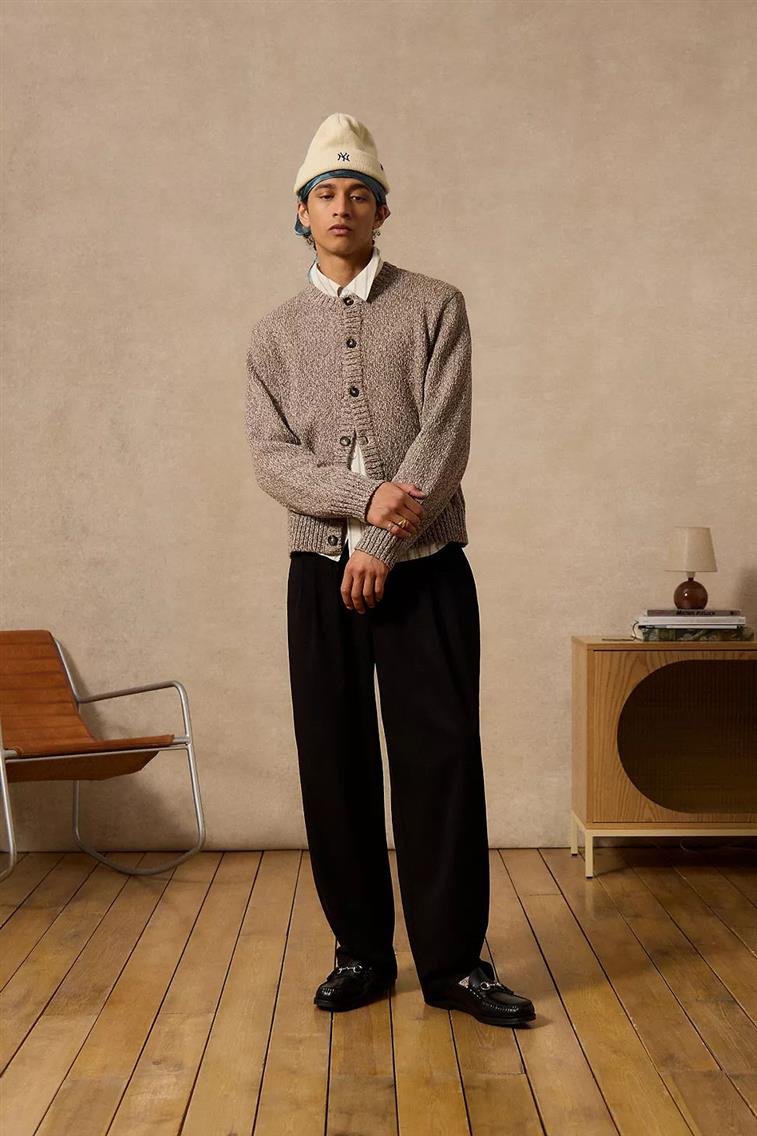
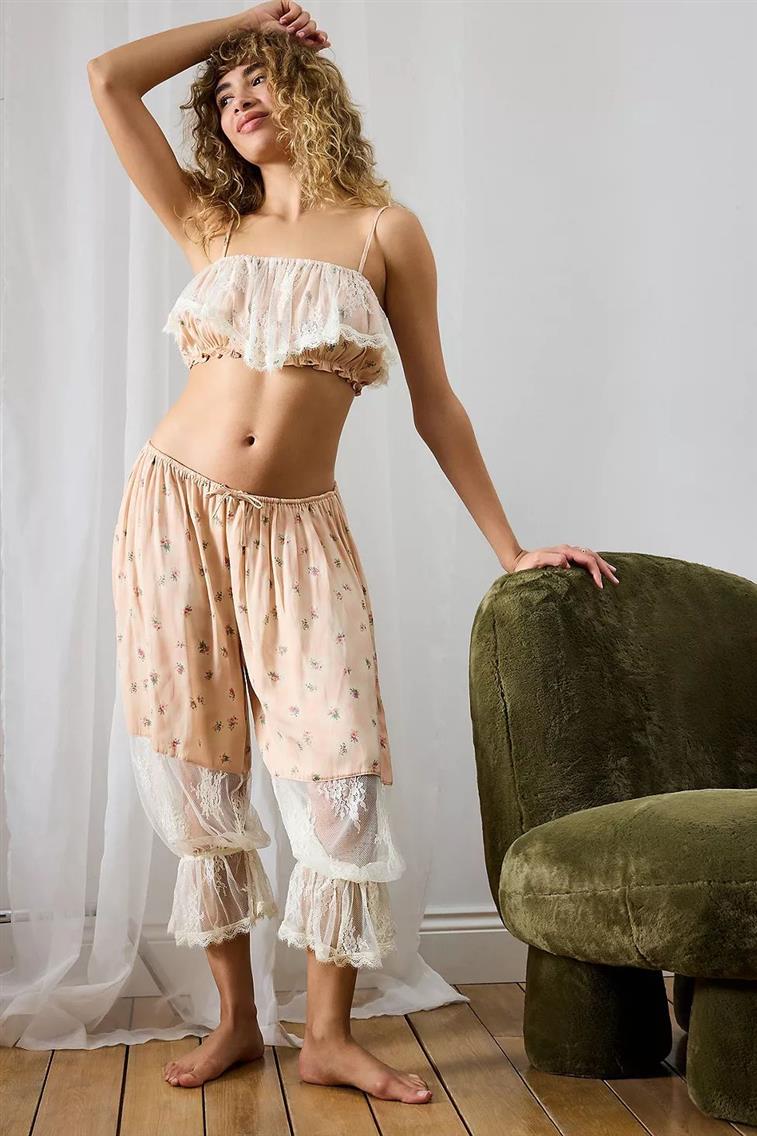
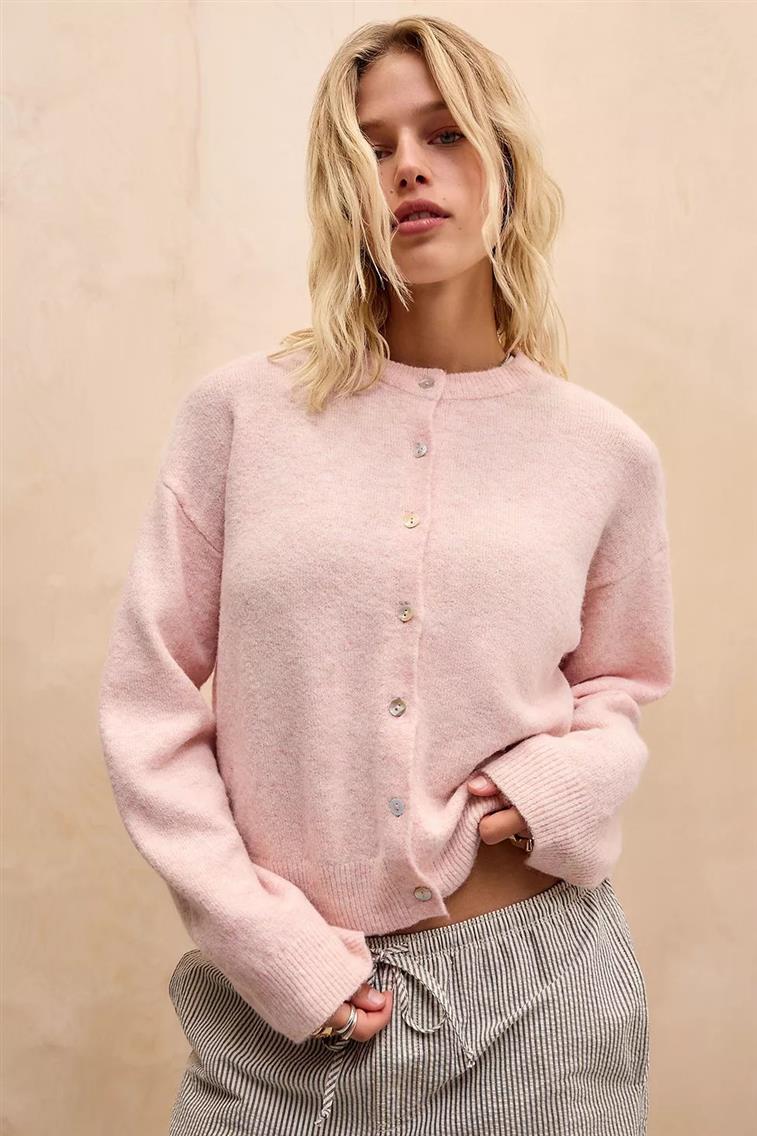
Jewelry and Accessories
These smaller items require specialized techniques to showcase scale, detail, and wearability:
- Cropped body sections: Focus on relevant body areas (neck, wrists, ears) to provide scale context
- Multiple angles: Show how pieces look from different viewpoints
- Layering demonstrations: Display how items can be combined with other pieces
- High-End styling: Create aspirational settings that elevate perceived value
- Extreme close-ups: Highlight craftsmanship details and material quality
Successful jewelry brands excel by combining these approaches, showing both detailed close-ups and contextual body shots that help customers understand proportions. Explore some fashion jewelry shots from LenFlash studio portfolio:
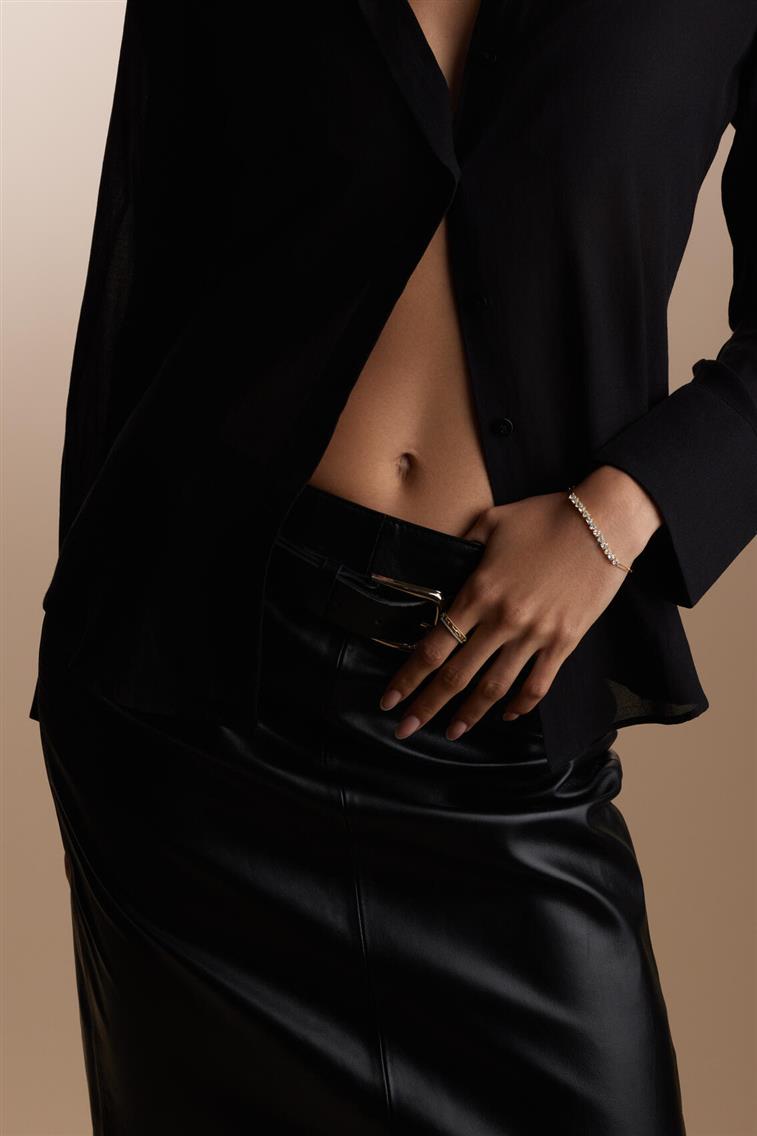

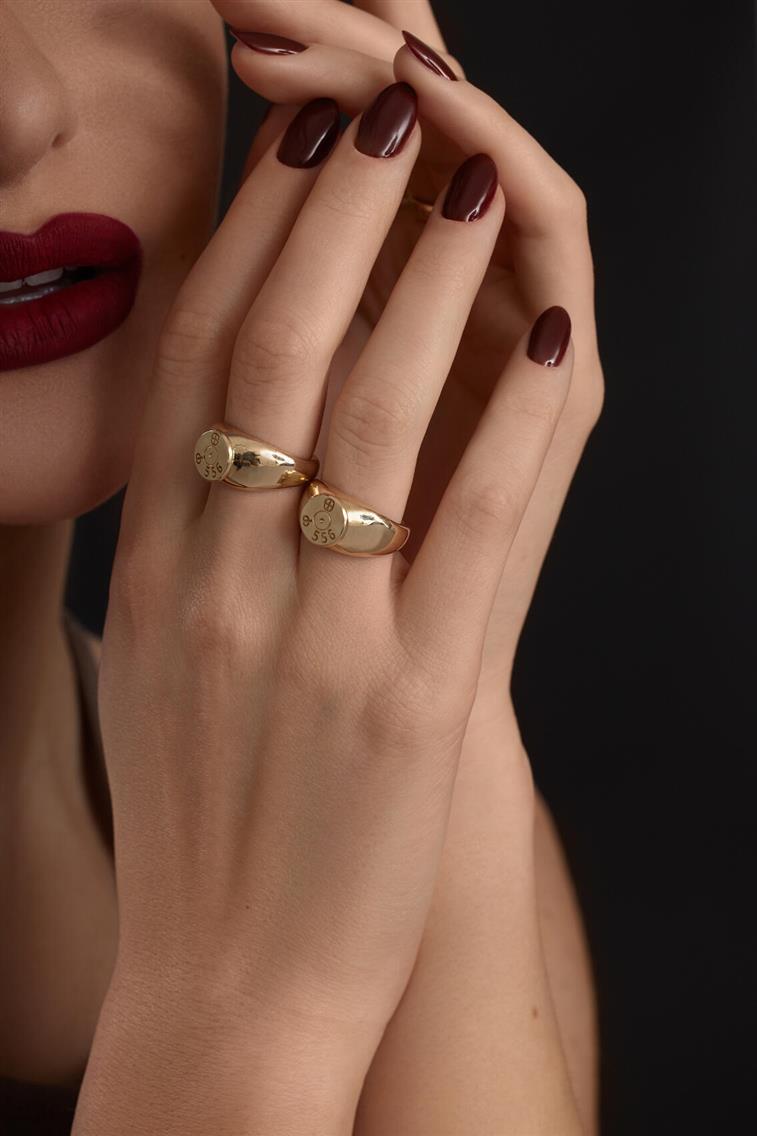
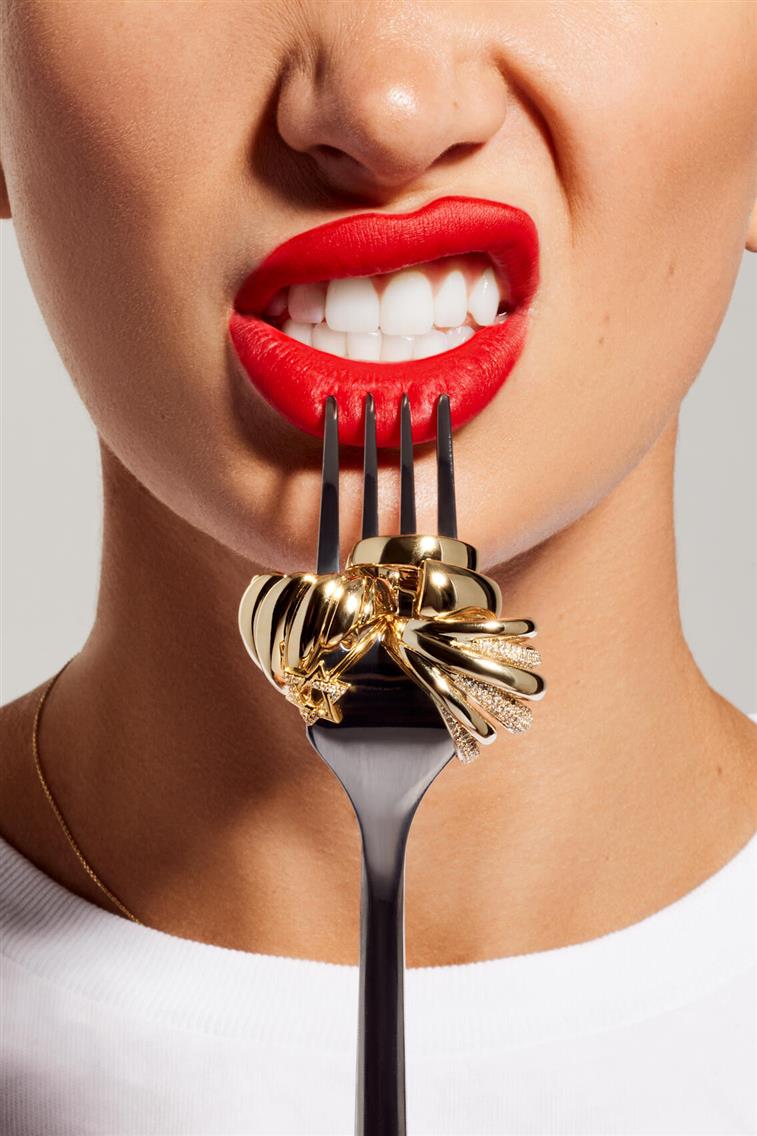
Beauty and SkincareBeauty photography must demonstrate product performance while addressing diversity needs, which is honestly one of the trickiest balances in ecommerce photography. Skin texture realism is crucial. Show authentic skin that's been retouched but not completely airbrushed into unrealistic perfection. Application process shots are incredibly helpful, especially for complex products. Before, during, and after sequences tell a complete story about what customers can expect. Diverse models aren't just nice to have anymore - they're essential for showing how products work with different skin tones and types. The clinical versus lifestyle balance matters a lot in beauty. You need those clean, studio shots that clearly show color and texture, but you also want contextual usage imagery that shows the product fitting into someone's actual routine. Color accuracy is critical, especially for cosmetics, where getting the wrong shade is a guaranteed return. | 
|
 | Footwear and ActivewearThese categories need dynamic imagery demonstrating performance and comfort. Movement-focused photography shows products during relevant activities like running shoes during morning jogging, yoga pants in poses. Multiple angles are especially important for footwear because customers want to see the profile, heel, toe, and sole. Fit indicators communicate support and flexibility through visual cues. Lifestyle context demonstrates appropriate usage scenarios, while scale reference helps customers understand sizing better. |
Home, Wellness, and Lifestyle ProductsThese businesses win from contextual demonstration in realistic environments, showing how they fit into actual living spaces. Usage demonstration helps customers understand functionality in ways that descriptions alone can't convey. Lifestyle alignment means creating scenes that reflect your target customer's actual environment. | 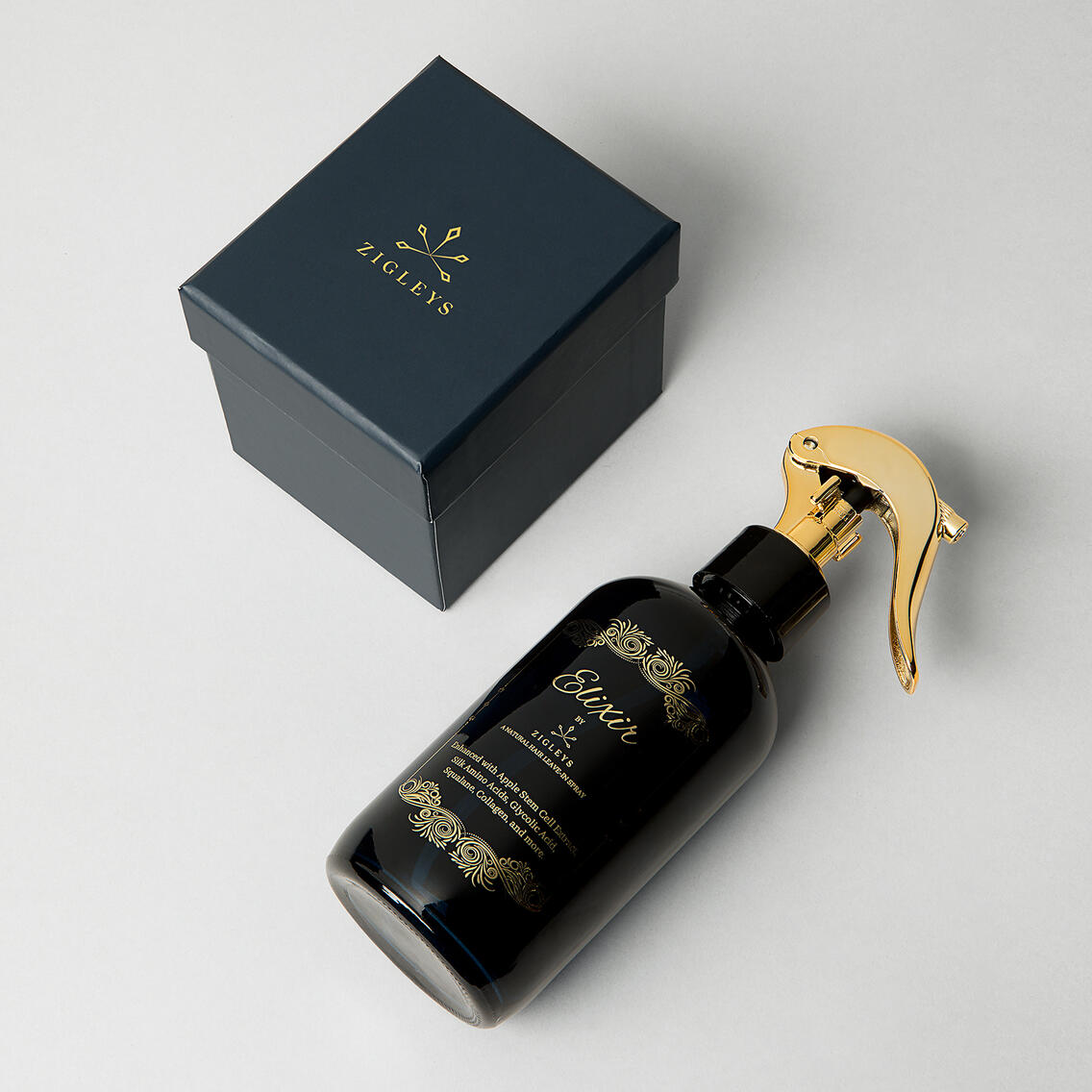 |
Editorial Fashion Photography to Define Your Visual Brand Language
Communicating Brand DNA Through Imagery
Every successful fashion brand has a unique DNA — a distinctive combination of values, aesthetics, and emotions that define its identity. This DNA is what separates you from competitors and creates recognition in a saturated market. Fashion photography serves as the visual translator of this DNA, turning abstract brand concepts into tangible, shareable assets that communicate instantly with your target audience.
Think about what makes Prada different from Gucci, or how you instantly know a Calvin Klein campaign from an Adidas one. These distinctions aren't accidental — they're the result of strategic decisions about how a brand’s DNA is expressed visually through photography.
The most effective fashion photography reveals who you are as a brand. Are you rebellious and edgy? Sophisticated and minimal? Playful and irreverent? These brand personality traits should inform every photographic decision, from lighting to model selection to post-production.
Editorial fashion photography in particular offers the creative freedom to explore brand DNA through extended visual narratives. Unlike single product shots, editorial spreads and campaigns create immersive brand worlds that customers can step into. When done strategically, these visual narratives don't just sell products — they sell tickets of belonging to a certain lifestyle they represent.
For brands, this means approaching photography not just as a way to showcase collections but as an investment in brand storytelling that builds recognition and loyalty over time. The best fashion photography creates an emotional shorthand between brand and consumer, communicating complex brand values in milliseconds without a single word.
Establishing Visual Consistency
When consumers can identify your brand from imagery alone, you've achieved true visual brand equity. This recognizability doesn't happen by accident. It comes from establishing and maintaining consistent visual elements across all photographic assets.
This consistency doesn't mean repetition or monotony. Rather, it's about creating a cohesive visual language that can flex across different collections, seasons, and platforms while remaining distinctively yours. Think of it as creating a photographic handwriting that's instantly recognizable regardless of what's being written.
The components of this visual consistency include:
Lighting Signature
Your approach to lighting — whether harsh and dramatic or soft and natural— becomes a key brand identifier. Burberry's campaigns often feature a distinctive British outdoor daylight that communicates heritage and authenticity. Meanwhile, Tom Ford consistently employs dramatic, high-contrast lighting that exudes luxury and sensuality. These lighting choices aren't just aesthetic — they're strategic expressions of brand positioning.


Color Palette and Grading
The way you handle color in your photography creates immediate brand recognition. Bottega Veneta's recent campaigns feature a distinctive natural color grading that instantly signals the brand's contemporary luxury positioning. Some brands opt for desaturated palettes that communicate understated sophistication, while others embrace vibrant hues that convey playfulness and energy. Your post-production color decisions are as important as the physical colors in your collection.




Models and Casting Choices
The faces that represent your brand become inextricably linked with your identity. Consistent casting doesn't necessarily mean using the same models, but rather selecting individuals who embody your brand values. Are they diverse or homogeneous? Conventionally attractive or uniquely distinctive? The human element in your photography is often what customers connect with most emotionally, making casting one of your most crucial brand decisions.
Setting and Environment
The worlds in which you place your products communicate volumes about your brand positioning. Urban concrete jungles, pristine natural landscapes, minimalist studios, or opulent interiors — these environments place your products in cultural contexts that influence how customers perceive their value and relevance. Your consistent choice of settings creates a sense of place associated with your brand.




When these elements work together consistently across campaigns, the cumulative effect is powerful brand recognition that goes beyond logos or product features. This visual consistency creates efficiency in your marketing—each new image builds on the recognition established by previous ones, creating compound returns on your photography investment.
For business, this means developing clear visual guidelines for photographers that communicate not just technical specifications but brand values and positioning. The most successful brands treat photography as a strategic business asset rather than a departmental deliverable, with leadership involved in establishing the visual language that will define their market position.
Creating Narrative Through Fashion Photography
From Products to Aspiration
The most effective fashion photography transcends selling a desirable lifestyle or aspiration. This narrative approach answers the critical question: "Who will I become with this product?" rather than just “What will I wear?”
Customers rarely purchase fashion items simply for their functional benefits. They're buying into a story — a narrative about who they are or aspire to be. Fashion photography is the primary vehicle for communicating this aspirational narrative.
| Consider the evolution of athletic wear photography. Brands like Lululemon don't simply show yoga pants; they depict a lifestyle of wellness, mindfulness, and community. The product becomes a gateway to a more desirable state of being. This transformation from product documentation to lifestyle narrative fundamentally changes the purchasing equation — from cost-benefit analysis to emotional investment. | 
|
The most successful fashion brands understand that customers don't just want products; they want a transformation of their lifestyle. Whether it's the sophistication of Chanel, the adventure of Patagonia, or the creativity of Gucci, these brands use photography to depict not just clothing but versions of self that customers aspire to embody. The garments become vehicles for personal storytelling and identity expression.


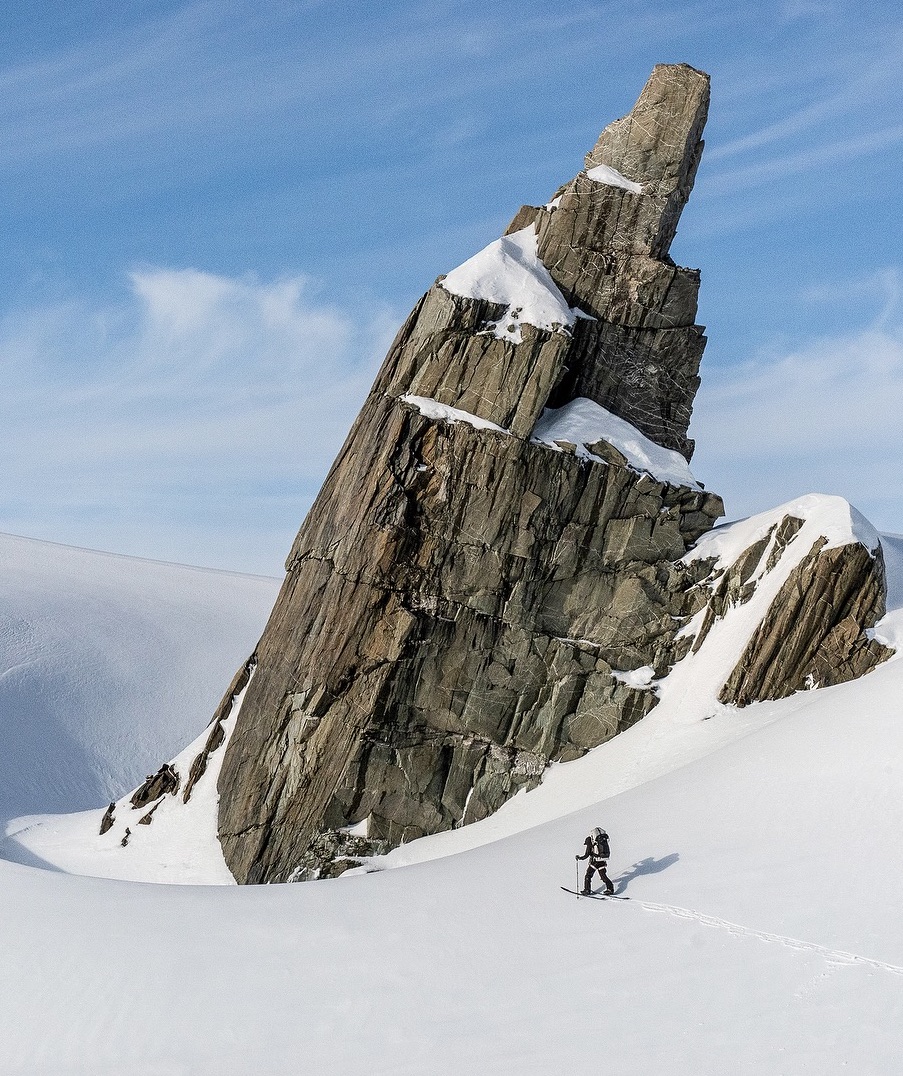
For business, this means approaching fashion photography with clear answers to questions like: What aspirations does your brand fulfill? What lifestyle does it represent? What version of themselves do customers want to express through your products? These narrative foundations inform every photographic decision, from location to model selection to styling.
When executed effectively, aspirational fashion photography creates an emotional connection that transcends price sensitivity. Customers aren't just buying a shirt or dress — they're buying into a narrative about themselves. This emotional investment commands premium pricing and builds loyalty that transactional relationships cannot match.
The Campaign Approach
Seasonal campaigns allow brands to tell cohesive stories that build emotional connections with consumers. These narrative-driven shoots go beyond showcasing individual products to create comprehensive brand experiences.
Unlike one-off product shots, campaign photography develops thematic stories that unfold across multiple images and platforms. Campaign photography creates distinctive, memorable moments in your brand timeline. These landmark visual statements become reference points that customers associate with your brand evolution. Think of iconic campaigns like Calvin Klein's black and white photography or Benetton's provocative social messaging — these images transcended their seasonal context to become defining moments in fashion history.
For emerging brands, well-executed campaigns can serve as inflection points that elevate market perception and attract new audience segments. A single powerful campaign can reposition a brand in the marketplace more effectively than dozens of disconnected product images.
Balancing Artistic Vision with Commercial Needs
While artistic, boundary-pushing photography may win awards and generate industry buzz, it should serve your business objectives, too. This balance between creative expression and commercial functionality represents one of the most critical strategic decisions for fashion brands.
The most effective fashion photography doesn't force a choice between artistic vision and commercial performance — it strategically aligns both. Understanding how to strike this balance requires clarity about your business goals, target audience, and market positioning.
Too often, fashion brands swing to extremes. Some prioritize artistic expression to the point where products become indecipherable, alienating potential customers who can't envision themselves wearing the garments. Others produce technically perfect but creatively sterile images that fail to generate an emotional connection or brand distinction. The sweet spot lies in photography that creates desire while providing sufficient clarity for purchasing decisions.
Online shopping environments in particular demand technical excellence even for creative fashion photography. As e-commerce becomes the primary sales channel for many fashion brands, photography must bridge the gap between aspiration and information:
Showing Product Details, Not Just Mood
Even the most conceptual fashion photography must provide enough product visibility for customers to make informed purchasing decisions. This doesn't mean sacrificing creative vision — it means ensuring that key product details remain visible amid artistic expression.
Styling That Highlights Key Features
Styling plays a crucial role in balancing artistic vision with commercial objectives. While editorial styling might layer multiple pieces or use unconventional combinations to create mood, commercial considerations require highlighting sellable features that drive purchasing decisions.
Effective commercial styling:
- Emphasizes distinctive design elements that differentiate your products
- Creates complete looks that help customers envision how pieces work together
- Uses accessories and props that enhance rather than distract from key products
- Considers how garments will appear in thumbnail images and search results

The Commercial Impact of High-End Fashion Photography
Conversion Rate Optimization
Studies indicate that online shoppers attribute up to 75% of their purchase decisions to product photography quality. In A/B testing scenarios, enhanced photography regularly outperforms standard imagery by 30% or more in conversion metrics. This isn't surprising when we consider that photography serves as the primary sensory experience in digital shopping environments.
Building Perceived Value
Photography directly influences how consumers perceive the value of your products. This perception impact extends beyond individual purchasing decisions to affect your overall brand positioning and pricing power.
In blind testing scenarios, identical products presented with different quality photography are consistently perceived to have different value propositions. High-end photography doesn't just showcase products — it signals quality, attention to detail, and brand confidence that justifies premium pricing.
This perception management through photography works at multiple levels:
- Quality signaling: Professional photography suggests professional products
- Brand positioning: Visual aesthetics place your brand within specific market segments
- Price justification: Aspirational imagery supports premium pricing strategies
- Trust building: Polished visuals reduce perceived purchase risk
The most successful fashion brands understand that photography doesn't just document product value — it actively creates it. By investing in photography that elevates product perception, brands can command higher price points and resist market commoditization that erodes margins.
Investment vs. Return Analysis
Quality fashion photography requires significant investment. Brand owners should consider:
- Long-term usage rights and exclusivity
- Multi-purpose applications across channels
- Content longevity and reusability
- Brand equity building vs. immediate sales impact
Production Planning for Maximum ROI
Strategic planning of photoshoots can dramatically improve return on investment:
- Strong creative direction
- Professional team
- Creating varied content types in a single session (e-commerce, campaign, social)
- Planning for upcoming marketing needs
- Considering seasonal timing and market relevance
The Team Behind a Fashion Photoshoot
The team behind a fashion photoshoot is quite different from the team you’d have for a product photoshoot, mainly because the goals and the focus are not the same. In a fashion shoot, it’s almost like running a mini production company. You have the photographer who’s the visual maestro, setting up lighting and capturing angles that not only showcase the clothes but also bring the brand’s style and vibe to life. Then you’ve got models, who represent the brand’s target audience. They show how the clothing fits and moves on real bodies, making it relatable for shoppers.
On top of that, there’s a whole team making sure the shots look just right: the stylists and set designers who pick complementary items and set the scene to align with the brand’s image. Hair, makeup, and nail enhance the overall aesthetic without stealing the spotlight from the products.
Usually, there’s a creative director or brand lead involved, guiding the whole vision and ensuring everything sticks to the brand's guidelines while also being visually captivating. And finally, retouchers polish the images to perfection after the shoot, and a project manager or producer keeps everything running smoothly behind the scenes.
On the flip side, a product photoshoot is way more streamlined. It’s all about the product itself; the photographer focuses on perfect lighting and composition to highlight the product’s colors, textures, and details. You’ll often have a stylist or assistant on set to keep the product looking its best, but models, makeup artists, and other pros aren’t typically part of the process.
So, the key difference: fashion shoots are all about storytelling with a whole creative team bringing a brand’s spirit to life through people, styling, and atmosphere, while product photography is a more focused, detailed showcase of the item itself. Understanding this team setup can help you plan better and communicate your needs when working with studios or professionals.
If you want to dive deeper into how a fashion photoshoot team works and the roles involved, there’s a great article that breaks it down clearly to help you get a full picture: Understanding the eCommerce Photography Creation Process and Team Involvement.
Let’s Land This Plane with a Little Flair
Fashion photography is the heartbeat of modern eCommerce, a living, breathing invitation for your customers to step into the world you’ve built. Every image is shaking hands with your audience, whispering, “This is for you.”
You are communicating way more than the fabrics, metals, or pigments in your goods. You are showing possibility, identity, and belonging. Returns shrink, trust grows, and suddenly your brand is not a faceless store but a familiar presence in your customer’s life.
Each photo stacks another brick in the fortress of your brand’s reputation. You’re building a visual legacy that compounds in value, image after image, campaign after campaign. So, if you want your brand to be more than a fleeting scroll, if you want it to live in hearts, on hands, in homes, and wardrobes, invest in the power of fashion photography.

